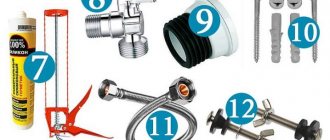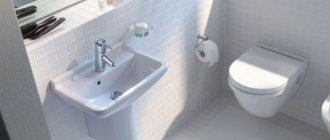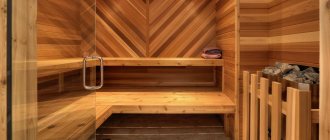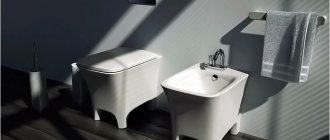With these tips you can easily unscrew a rusty bolt or nut!
Is it possible to unscrew a problematic bolt or rusty nut without resorting to emergency measures? Car enthusiasts know this issue best. They are the ones who most often encounter similar situations and can give practical advice by sharing successful experiences and recipes from their own arsenal of remedies. Let's consider the available options.
Lever arm
This is the first thing you can do if you need to unscrew a rusty nut or capricious bolt. A steel pipe placed on a key is used as a lever device. You should first go over the fasteners and around them thoroughly with a brush with metal bristles. It is better to use a spanner wrench, but in extreme cases an open-end wrench will do. Everything needs to be done carefully. The main thing is not to overdo it. Excessive force is unacceptable, as the result may be a torn bolt head, licked nut ribs or a broken key.
Chisel
Here we are not talking about simply cutting off a rusty nut or the head of a tight bolt. With a chisel and one sharp blow of a hammer, you can tear stubborn fasteners out of the tenacious embrace of rust. To do this, you need to point the chisel closer to the edge of the bolt or nut at an angle in the direction opposite to the thread, and then strike sharply and firmly with a hammer. Using this technology, experienced craftsmen masterfully remove any, sometimes even the most hopeless, nut or bolt with one blow. Of course, you still need to grow to such professionalism, but the method works.
Web page not found on InspectApedia.com
.
What to do if a link to a web page on InspectApedia.com results in a 404 page error
It's as simple as... well, choosing from 1, 2 or 3
- Use the InspectAPedia search box in the top right corner of our web page, find the text or information you're looking for, and then view the links our custom Google search engine returns
- Email us directly asking for help finding the information you've been looking for - just use the CONTACT US on any of our web pages, including this one, and we'll respond as soon as possible.
- Use your web browser's BACK button or arrow (usually in the top left corner of your browser screen next to the box showing the URL of the page you're on) to go back to the previous article you were viewing.
If you'd like, you can also send us an email with that name or webpage URL and tell us what didn't work and what information you need. If you really want to help us, use your browser's BACK button, then copy the URL of the webpage you were trying to load and use our CONTACT US (located at both the top and bottom of the page) to send us that information by email so we can resolve the issue. - Thank you.
We apologize for this SNAFU and promise to do our best to quickly respond to you and correct the error.
— Editor, InspectApedia.com
or enter your search terms in the InspectApedia search box just below.
We also provide a MASTER INDEX on this topic, or you can try the top or bottom SEARCH bar as a quick way to find the information you need.
Green links show where you are. © Copyright 2017 InspectApedia.com, All rights reserved.
The publisher of InspectApedia.com is Daniel Friedman.
Warming up
You should try to achieve the desired result by heating the capricious fasteners. Everything will do here - a gas torch, a soldering iron, a pocket lighter. You can even use rags soaked in gasoline or other flammable liquid, but this should be done carefully, following safety rules. Without waiting for the old nut or rusty bolt head to cool down, you need to try to unscrew them. The best choice for these purposes is not an open-end wrench, but a box or socket wrench. If you don’t succeed the first time, you can try combining techniques - tapping well, loosening, using a lever.
“Spray it with Vedashka” - this is how any garage will respond to a complaint about a problematic bolt or capricious nut. And they will be absolutely right. A better remedy has not yet been invented. Its exact recipe remains a mystery, but it is known for certain that the liquid consists of 50% white spirit. To unscrew soured fasteners, you first need to open access to the threads by treating the area around the bolt or nut with a wire brush, and then generously fill the fasteners with “magic” liquid, spraying it from a spray can. After 15-20 minutes you can try to unscrew it. This remedy is really effective and almost always helps.
Gasoline, kerosene, turpentine and others
Unfortunately, WD-40 is not always on hand, and buying a can because of one rusty nut or bolt is not the best solution in terms of savings. Therefore, it is worth trying some petroleum products - from white spirit to turpentine. All of them have high penetrating power and are solvents. This property will help in the event of a threaded connection becoming clogged with dirt of various natures. The procedure is standard - the area around the fastener is cleaned and filled with kerosene, diesel fuel, or gasoline. After 10-15 minutes, when the liquid penetrates deep into the thread, you can try to twist the bolt or nut.
Vinegar
A rusty bolt or nut that does not want to be unscrewed can be brought back to obedience by table vinegar. To do this, wet the area of the threaded connection with vinegar and wait 15 to 30 minutes. If time is not limited, then you can simply cover the fasteners with a rag soaked in vinegar. In a couple of hours, vinegar will thoroughly undermine the rust and weaken the adhesion of the mating surfaces in the fasteners. After such a “compress”, the rusty bolt or nut will at first reluctantly, and then become easier and easier to unscrew.
Alcohol solution of iodine
We are talking about the idea of an ordinary pharmaceutical alcohol solution of iodine. In this tandem, alcohol, also known as ethylene, and iodine, as an element of the periodic table, equally distribute among themselves the functions of freeing fasteners that have become soured in rust. Alcohol has a high penetrating ability, and iodine interacts with iron oxides and other iron compounds formed upon contact with the external environment. Thus, these two substances weaken the rust, making it easier to free the rusted bolt or nut. To avoid getting your hands dirty and for convenience, it is better to apply iodine to the connection using a syringe.
When problems occur with a toilet cistern, it is often necessary to repair individual components or completely replace the device. Read about how to disassemble the container for these purposes in our material.
Hygienic block for toilet Domestos “Needles”
Every housewife carefully monitors the cleanliness of the bathroom in her apartment and, in particular, the toilet.
This is a kind of business card, a kind of test of what kind of housewife you are. And if, in addition, the bathroom is combined with a bathroom, then the issue of cleanliness and hygiene must be approached especially carefully. Indeed, in this case you have to spend much more time in this room and it is always more pleasant to be there if basic conditions of cleanliness and comfort have been created. Fortunately, nowadays there are a lot of means and opportunities to keep your home clean and tidy. And I want to talk about just one of them today -
Hygienic block for toilet Domestos “Needles”
General characteristics:
Full name: Hygienic block for toilet Domestos “Needles”
Volume: 40 grams
Manufacturer: Unilever, Poland
Shelf life: 18 months
Price: about 40 rubles
Product Description:
The new toilet blocks produce more foam thanks to a new shape that is easier to clean with water. The new product has an intense and long-lasting aroma due to the increased area of the gel strip. Cleans and feels fresh after every rinse - with a new formula enriched with microparticles
What the manufacturer promises us:
2. Prevents the appearance of limescale
3. Provides a fresh scent thanks to the perfumed gel strip
The toilet block is packaged in colorful plastic packaging, which is full of promises from the manufacturer about an improved formula and what a great replacement block this is. Let's not be bullies and take his word for it. But it won’t be me if I don’t test this product in action.
On the front side of the package, in addition to the product name, we are greeted with particularly important information about safety precautions.
On the back of the package there is all the necessary information about the manufacturer and importer, the expiration date of the product
Let's open the package and see what's inside.
We take the block out of the packaging and the culprit of our today's conversation appears in front of us in all its glory.
And this is what it looks like from the back
Aroma:
This product really produces a smell of freshness and foam, especially in the first days. But as you spend the product, the smell and foam become less and less, which is quite logical.
Regarding hygiene and protection against limescale, I can say that the toilet actually gets a little less dirty when using these blocks. But it does not fully fulfill this function.
Compound:
>30%: Anionic surfactants; 5-15%: fragrance
Conclusion:
In conclusion, I want to say that I liked using this product. It copes well with aromatizing the room entrusted to it and slows down the formation of limescale and other contaminants.
Advantages:
Sequence of actions when dismantling the drain tank
The device is dismantled in a certain sequence. Let's look at modern models.
The first step is to disconnect the tank from the toilet. Note that the button head connection may vary in shape and thread (internal, external).
- close the water supply tap (it is located on the hard water pipe);
- disconnect the flexible line from the tank;
- by pressing the button we empty the tank and hold the element in this position;
- unscrew the head of the release key (we act carefully, counterclockwise) and remove the container lid;
- use a rag or sponge to remove any remaining liquid inside the device;
- using a screwdriver from the inside and a wrench (or using pliers) from the outside, unscrew the nuts;
- carefully lift the drive to separate it from the shelf. Here you may have to apply some force - in some cases the cuff sticks.
Attention! Standard fastening on a special protruding shelf consists of bolts or studs with a diameter of up to 7 mm. Bolts can be plastic or metal (bronze, brass, steel), with double-sided threads. As a rule, fastening is done through 2 holes (3 is less commonly used).
The single configuration was discussed above. Removing the cover, equipped with two buttons, has several features:
- when the container is empty, press the key that lowers the minimum volume (see photo);
- the lower part of the inner wall of the button contains a groove; use a screwdriver to press the lock through this opening (we act carefully);
- sequentially remove the large key from the cover, then the small one;
- remove the screw under the buttons holding the structure in place.
Reference! There are modifications where you first unscrew the decorative part (nickel-plated washer) and turn the lid 90º, perpendicular to the tank. Then press out the fixing brackets (inside the head).
We move the device to the place of further work.
The next step is to remove the drain fittings. The component is manufactured in various designs, but in all cases the dismantling scheme does not change:
- remove the seal from the nut securing the valve;
- unscrew the nut;
- We take out the drainage system from the container.
Reference! We disassemble the filling mechanism (which ensures that the tank is filled with water) in an identical manner. Fasteners can have different shapes (pentagonal, round); here it is important to choose the right tool.
Outdated models have differences in the disassembly process:
- to remove the upper part, remove the handle on the drain valve lever and unscrew the nut;
- to remove the drain valve, unscrew the screws securing it to the bottom of the tank;
- Usually the overflow tube has a separate fixation (plastic nut), we will use a wrench.
Reference! In some copies, the upper part is not fixed to the body and can be easily removed.
Forms of toilet fragrances
The products are available in a variety of forms, but they all work on the same principle - they fill the space with freshness , clean and disinfect the bowl when rinsed with water from the tank.
Hanging blocks
The blocks are plastic baskets with holes and a hook for attaching to the toilet rim.
The freshener itself is placed inside in the form of a tablet or stick, which is replaced with a new consumable as it is washed off.
Popular means:
- Cillit BANG - maintains cleanliness and freshness with every rinse, gives the water a pleasant blue tint.
- Domestos - contains a perfumed gel strip that fights plaque and bacteria.
Pros : affordable price, ease of use.
Disadvantage: prone to block breakage.
Balloons
These products differ from hanging blocks only in the shape of the container - it is made in the form of balls containing a deodorizing substance.
- Domestos - balls provide abundant foam, maintain hygiene, prevent limescale deposits and add shine to ceramics.
- Bref Blue aktiv - aromatizes, colors water blue, fights dirt and germs.
Pros : effect 4 (5) in one, rich aroma.
Cons : fragility of plastic, labor-intensive replacement of consumables.
Gel products work in combination with special blocks. A plastic container is hung on the rim of the toilet and filled with gel .
- Bref gel Wave of freshness - contains granules of freshness with an active odor, keeps plumbing clean;
- Toilet duck 4 in 1 - creates an antibacterial effect, prevents the formation of limescale.
Pros: economical, low consumption, convenient change of filler.
Cons : higher price.
Why is a rusty bolt or nut difficult to unscrew?
Any metal fastener inevitably undergoes corrosion and rust over time. The process is accelerated if the bolts and nuts are often exposed to aggressive environments:
- contact with water;
- interaction with chemicals, including detergents;
- street dirt, dust, caustic salts - they accelerate the corrosion process.
After some time, the rusted bolt must be removed and replaced, but a problem often arises - it will not unscrew. Due to the oxidative processes of the metal, rust grows on fasteners and parts and the surfaces “grab” together. If this process develops at the location of the bolt thread, then the situation becomes even more difficult.
Reasons for replacement
Replacing a toilet tank is an unpleasant problem, but nevertheless solvable. The following factors clearly indicate that replacement is necessary:
Advice. To prevent such phenomena, install a coarse and fine filter.
If, due to carelessness, the drain tank bursts and a crack “creeps” along its wall, then you will have to install a new one. To replace a burst toilet tank you will need:
- drain/fill fittings;
- gaskets/bolts for fastening;
- cistern;
- silicone sealant.
The best ways to loosen rusty bolts and nuts
Let's take a closer look at the best ways to unscrew rusty parts.
The most famous and common option is to unscrew using a lever. When the bolts are rusty and they do not cope with their function of fastening, for example, a toilet, this problem is solved this way. Use a stiff bristle brush to clean the fasteners from corrosion. A piece of metal pipe is put on a spanner or open-end wrench and used as a lever device. Actions should be smooth. Then the fastening is removed with a spanner.
Dissolving rust
Car repair shops know how to unscrew a rusty bolt using WD-40 liquid. The product is able to penetrate deep into gaps and reach the threads of fasteners, completely dissolving the rust structure. You need to use it like this:
- After shaking the liquid in the can, spray the problem area;
- wait a certain time - from 20 to 40 minutes or more, if the fasteners are large and there is a lot of rust;
- the aerosol liquid will quickly corrode the rust and help destroy oxide layers along the entire fastener thread;
- perform vigorous movements to unscrew the bolt.
The problem is almost always solved by unscrewing the fasteners from the bolts. If you don’t have this aerosol at hand, there are many other effective ways.
Heating
An affordable and simple way to unscrew rusty fasteners is by heating. Any heating device will do: a hair dryer, a soldering iron, a gas burner or a regular lighter. When heated, the metal changes its structure, expands, becomes more pliable, and corrosion is destroyed under the influence of high temperatures:
- the fastening is subjected to intense heating for several minutes, it is advisable to wait until the metal is red-hot;
- without allowing the fasteners to cool, they unscrew; it is possible to use methods of loosening and tapping;
- use a socket or socket wrench.
Installation
Installation should be done only after finishing work has been completed, that is, on tiles or on a flat, cemented surface. Installation begins by connecting the device to the sewer. For this purpose, a corrugated outlet is used.
It is better to purchase a new element - it is unlikely to work with the old toilet. Next, a rubber seal is put on the toilet outlet pipe. The latter is pre-moistened in water. Then the toilet is installed in the chosen place and the second end of the corrugation is attached to the sewer pipe.
At the base of any modern toilet there are mounting lugs. Through them, using a marker or pencil, marks are made on the floor. Disconnect the corrugation from the sewer outlet and move the toilet to the side. This will free up space for drilling holes in the marked places. During the work we will need a hammer drill. The diameter of the hole must correspond to the plugs that come with the toilet mounting kit. You will also need special drills with pobedit tips. They are suitable for working with concrete and tiles.
Next, the toilet is returned to its original place. It is necessary to align the holes made with the factory ears. Fastening is carried out with bolts or using long screws with a hex head. Pay attention to the tightening torque. It is important not to overdo it so as not to deform the ceramic floor tiles.
The final stage of installation is to seal all joints where the toilet comes into contact with the floor.
Products for working with rusty fasteners
WD-40 may not always be at hand, and not everyone will want to buy it to remove one or more bolts. There are many available products that will help remove rust and unscrew fasteners:
- Coca Cola. This drink contains elements that are used in production for degreasing, soldering, and for cleaning metal from rust. The liquid is poured over the problem areas of the fastener, left for 20-30 minutes, then the bolt usually succumbs to the “miracle drink” and is unscrewed.
- Vinegar 9%. Feel free to use it in this situation. Generously moisten the threaded bolt or even place a rag soaked in vinegar on it for a period of 20 minutes to several hours, depending on the situation. It’s better to go for a walk during this time so as not to breathe in the vinegar fumes. After such a lotion, the bolts and nuts are given up.
- Car enthusiasts often use brake fluid on corrosive fasteners. The liquid penetrates into any cracks and threads and has lubricating properties. Fasteners are unscrewed with much less effort.
- Kerosene, gasoline or motor oil are suitable in this situation. These substances will penetrate the rust structure, destroy it, and make it easier to unscrew. They are poured in and left for a while, after which the fasteners are disassembled.
- Rust converter - it contains a special acid that destroys iron oxides. The problem area is moistened with the converter, you can put the moistened rag for several hours, after which the nut is easily unscrewed.
Selecting the right tool
To achieve the desired result as quickly as possible, without damaging other parts, be sure to use the appropriate tool to unscrew rusty fasteners. It’s better to prepare it in advance so that you can try several options at once:
- open-end and ring wrenches;
- socket wrench or socket head;
- nut remover;
- nails or awls of different diameters, hard brushes for removing rust;
- hammer and chisel.
By selecting the right tool, the problem will be quickly solved.
Preparation
First we need to prepare the work area. To do this, remove all rugs and shelves from the bathroom. Make sure there are no fragile parts nearby. We will also need working tools, namely:
- pliers;
- hammer;
- chisel;
- hacksaw for metal;
- wrench;
- stationery knife.
Additionally, you will need a basin, rubber gloves, safety glasses and rags.
Before dismantling the toilet with your own hands, you need to turn off the water in the riser. Next, all the liquid from the tank is drained into a basin.
Prevention of the problem
If the bolts rust and cause a lot of inconvenience when unscrewing, you should put an end to this problem. Professionals advise:
- Be sure to coat all fastening points of parts with special silicone grease before tightening them. Thanks to this, metal fasteners are protected from corrosion for a long time.
- It is advisable to carry out preventive inspections of car parts or plumbing from time to time. You should not start the process if you notice slight rust on one of the fasteners. It is always easier to replace fasteners and parts at the initial stage of corrosion than to fight rust when it has completely corroded the metal.
- Fasteners should be tightened in accordance with the tightening degree of similar threaded connections.
If, having previously selected the necessary tools, you use one or several of the methods listed, then the rusted bolt will definitely give in. But it is better not to reach extreme situations and carry out periodic technical inspections.
Connection to water supply
Now you need to connect the toilet tank to the water supply system. To do this, use a flexible hose with nuts at both ends. You can see what this element looks like in the photo in the article.
It is important to ensure maximum tightness. For better sealing, you should use FUM tape, but sometimes rubber gaskets are included with the hoses.
At this point, installation and dismantling of the toilet has been successfully completed. After which you can turn on the water supply system. The plumbing will be fully usable after the sealant has completely dried.











